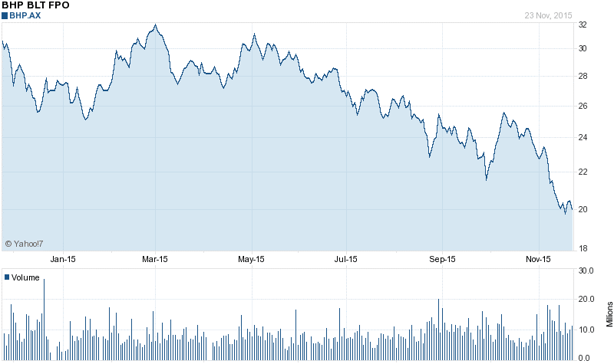Here is our house view on the recent volatility in the local and global stock markets. Information and data was sourced from Morningstar, Commsec, Yahoo!7 Finance, Fat Prophets newsletters, news reports from the Australian, the Financial Times, Bloomberg and ABC News.
World stock markets have rebounded strongly over October and into November led by US markets on the back of a positive US reporting season, strong US economic data and further stimulus by China. Talk by the US Federal Reserve that a December rate hike is likely but at a gradual pace helped soothe market concerns while comments from the European Central Bank of further monetary easing to boost the Eurozone economy was imminent next month added to market sentiment. Weak data out of China and an increase in oil supply saw commodity prices continue to slide leading to Australian share market gains being less than gains on overseas markets with the US S&P 500 Index up 8.4% in October to record its best month in over 4 years.
China’s economy continued to weaken as growth in the 3rd quarter slowed to 6.9%, its slowest pace since Q1 2009 compared to the previous quarter’s 7%. Other weak data included annual inflation of 1.3% in October as consumer prices fell 0.3% during the month to record its first negative measure since May while imports fell 18.8% in October compared to a year ago and exports declined 6.9% on year. Manufacturing activity indicated by the Caixin Purchasing Managers’ Index (PMI) increased to 48.7 in October from 47.2 in September to remain below 50 and in contraction for the 8th straight month. This prompted the People’s Bank of China to again ease monetary policy as it lowered interest rates for the 6th time this year with the benchmark one-year lending rate cut 25bps to 4.35%. The deposit rate was also reduced by 25bps to 1.5% and the Banks’s Reserve Requirement Ratio was cut by 50bps to 17.5% to further stimulate the weakening economy. China also announced that the one child policy was being dropped to allow couples to have two children to combat the aging population and boost the economy while President Xi Jinping talked up the economy stating “China could maintain annual growth of about 7% over the next five year”.
The Australian share market as measured by the ASX 200 Index increased 4.4% in October driven by movements in international markets while being dragged back by lower commodity prices impacting the resources sector. The weak China economic news has seen copper prices trade down to a 6 year low of below $US4,600 a tonne while oil declined to under US$40 a barrel to reach a 2.5 year low on record global stockpiles. This has impacted BHP which has fallen close to 40% this year from its highs as it also suffers from its recent Brazilian mine disaster. BHP has traded below $20 lately, its lowest price since 2005 in response to its 50/50 jointly owned Samarco iron ore mine with Brazil’s Vale where its tailings dam collapse triggered a mud and sludge slide which flattened a nearby village. The decline in the BHP share price can be seen by the chart below sourced from Yahoo!7Finance:

The current dividend yield for BHP is 8.7% where historically the yield has been in the 3-4% range. At these levels, BHP could be viewed as an “income stock” however there have been market concerns about the sustainability of the dividend. Management have stated that they will be maintaining the current dividend in line with the company’s policy of not reducing dividends. Our view is that BHP is a low cost miner with the ability to increase mining volumes together with a forecast lower Australian Dollar offsetting USD commodity price weakness. These factors will support BHP’s earnings especially as China’s stimulus programs take hold and China’s need for resource imports increases which will see commodity prices bottom out at some point.
In Australian economic news, the Reserve Bank of Australia (RBA) kept the cash rate on hold for a 6th straight month at 2% but left the door open for a rate cut if the economy deteriorates. RBA Governor Glenn Stevens stated “The Board judged that the prospects for an improvement in economic conditions had firmed little over recent months” and “members also observed that the outlook for inflation may afford scope for further easing of policy.” This was backed up by the release of soft September quarter inflation figures where the Consumer Price Index (CPI) rose 0.5% leaving inflation at just 1.5% for the year. The unemployment rate fell to 5.9% for October from 6.2% previously as 58,600 new jobs were created, more than four times forecast in a likely response to the change of Prime Minister to Malcom Turnbull. The strong employment data reduces the chances of a December rate cut by the RBA with the next inflation figures due in late January to provide further interest rate direction for the RBA.
The potential for future rate cuts by the RBA leads to income stocks continuing to being attractive on the Australian share market. Current dividend yields on some of the higher yielding stocks are listed below together with their grossed up yields which includes franking credits.
|
ASX Code – Company Name |
Dividend Yield |
Grossed-Up Dividend Yield |
|
BHP – BHP Billiton |
8.7 |
12.5% |
|
CBA – Commonwealth Bank |
5.3 |
7.6% |
|
ANZ – ANZ Bank |
6.7 |
9.5% |
|
NAB – National Aust. Bank |
6.6 |
9.5% |
|
WBC – Westpac Banking Corp. |
5.9 |
8.5% |
|
TLS – Telstra |
5.8 |
8.2% |
Sources: Commsec, Morningstar
Outlook
The direction of markets in the short term will be led by central bank action in December with the US Federal Reserve tipped to raise interest rates from near zero for the first time in 7 years at its December 15-16 policy meeting. This follows comments from the Federal Reserve’s Chair Janet Yellen who “sees a possible rate rise, and a gradual hiking path” while San Francisco Federal Reserve President John Williams stated “there’s a strong case for a Federal Reserve interest rate increase in December assuming US economic data continues to be encouraging, however the slope of increases after an initial move is most important.” Strong US employment data for October saw 271,000 jobs created against forecasts of 185,000 resulting in the unemployment rate falling to 5% from 5.1% the previous month. US wages are also growing with a 0.4% rise in October with wages up 2.5% for the year providing further evidence of a strengthening US economy and more reason for the Federal Reserve to begin raising rates. Market sentiment will also be led by the actions of the European Central Bank (ECB) where its President Mario Draghi recently stated “the bank stood ready to boost the size, composition and duration of the bank’s bond-buying program” which currently stands at EUR60bn of government bonds being bought a month until at least September 2016. Draghi also indicated the ECB was prepared to cut deposit rates further into the negative where the overnight deposit rate is at -0.20%. The next ECB meeting is scheduled for December 3 where further stimulus will be positive for markets as we head into the traditional Christmas rally.
You can download the market index returns from Morningstar below for the various asset classes to the end of October 2015.
This article is intended to provide general information only, and is not to be regarded as legal or financial advice. The content is based on current facts, circumstances, and assumptions, and its accuracy may be affected by changes in laws, regulations, or market conditions. Accordingly, neither Azure Group Pty Ltd nor any member or employee of Azure Group or associated entities, undertakes responsibility arising in any way whatsoever to any persons in respect of this alert or any error or omissions herein, arising through negligence or otherwise howsoever caused. Readers are advised to consult with qualified professionals for advice specific to their situation before taking any action.






Comment